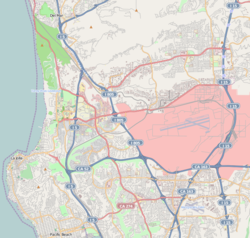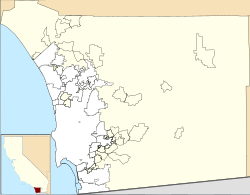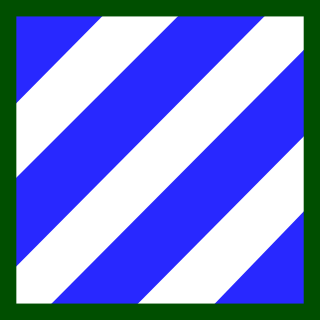
Fort Stewart is a United States Army post and census-designated place in the U.S. state of Georgia. It lies primarily in Liberty and Bryan counties, but also extends into smaller portions of Evans, Long and Tattnall counties. The population was 11,205 at the 2000 census. The nearby city of Hinesville, along with Ft. Stewart and the rest of Liberty and Long Counties, comprise the Hinesville metropolitan area. Many of Fort Stewart's residents are members of the 3rd Infantry Division.
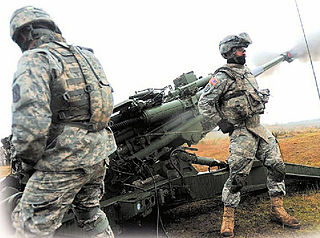
Fort Lewis is a United States military facility located 9.1 miles (14.6 km) south-southwest of Tacoma, Washington, under the jurisdiction of the United States Army Joint Base Garrison, Joint Base Lewis–McChord. It was merged with the United States Air Force's McChord Air Force Base on 1 February 2010 into a Joint Base as a result of 2005 Base Realignment and Closure Commission recommendations.
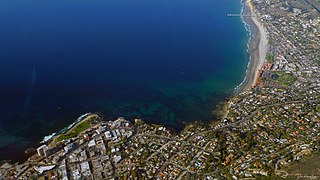
La Jolla is a hilly, seaside neighborhood within the city of San Diego, California, occupying 7 miles (11 km) of curving coastline along the Pacific Ocean. The population reported in the 2010 census was 46,781.
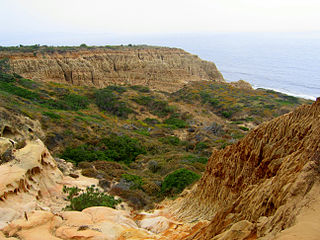
Torrey Pines State Natural Reserve is 2,000 acres of coastal state park located in the community of La Jolla, in San Diego, California, off North Torrey Pines Road. Although it is located within San Diego city limits, it remains one of the wildest stretches of land (8 km²) on the Southern California coast. It is bordered immediately on the south by Torrey Pines Municipal Golf Course and on the north by the city of Del Mar. The reserve was designated a National Natural Landmark in 1977.

Marine Corps Air Station Miramar, formerly Naval Auxiliary Air Station (NAAS) Miramar and Naval Air Station (NAS) Miramar, is a United States Marine Corps installation that is home to the 3rd Marine Aircraft Wing, which is the aviation element of the 1st Marine Expeditionary Force. It is located in Miramar, San Diego, California, about 14 miles (23 km) north of Downtown San Diego.

Black's Beach is a secluded section of beach beneath the bluffs of Torrey Pines on the Pacific Ocean in La Jolla, San Diego, California, United States. It is officially part of Torrey Pines State Beach. The northern portion of Black's Beach is owned and managed by the California Department of Parks and Recreation, while the southern portion of the beach, officially known as Torrey Pines City Beach, is jointly owned by the city of San Diego and the state park, but is managed by the city of San Diego. This distinction is important as Black's Beach is most known as a nude beach, a practice that is now prohibited in the southern portion managed by the city of San Diego.
Tobyhanna Army Depot, is a logistics center for the United States Department of Defense (DoD), specializing in electronic systems. It is located in Coolbaugh Township, Monroe County, near Tobyhanna, Pennsylvania. Established February 1, 1953, as Tobyhanna Signal Depot, today it is a facility for the repair, upgrade and integration of Command, Control, Computer, Communications, Intelligence, Surveillance and Reconnaissance (C4ISR) systems for all branches of the Armed Forces.

Fort McClellan, originally Camp McClellan, was a United States Army post located adjacent to the city of Anniston, Alabama. During World War II, it was one of the largest U.S. Army installations, training an estimated half-million troops. After the war it became the home of the Military Police Corps, the Chemical Corps and the Women's Army Corps. From 1975 and until it was closed in 1999, Fort McClellan was home of the Military Police Corps and the One Station Unit Training (OSUT) Military Police School. Also after World War II and until it was closed in 1999, it was home of the Chemical Corps School, which trained soldiers in chemical warfare. In 1988, Fort McClellan was used as an alternate training academy for the United States Border Patrol. Before its closure by the Base Realignment and Closure commission (BRAC), the post employed about 10,000 military personnel and about 1,500 civilians. It underwent unexploded ordnance (UXO) clean up from 2003–14. Since 2010, about 3,000 acres of the post's brownfield land have been redeveloped as a mixed-use community.

Marine Corps Outlying Field (MCOLF) Camp Davis is a military use airport southeast of the central business district of Holly Ridge, in Onslow County, North Carolina, United States. It is used as a training facility by the United States Marines of Camp Lejeune and MCAS New River.

Camp Kearny was a U.S. military base in San Diego County, California, on the site of the current Marine Corps Air Station Miramar. It operated from 1917 to 1946. The base was named in honor of Brigadier General Stephen W. Kearny.
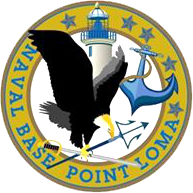
Located in Point Loma, a neighborhood of San Diego, California, Naval Base Point Loma (NBPL) was established on 1 October 1998 when Navy facilities in the Point Loma area of San Diego were consolidated under Commander, Navy Region Southwest. Naval Base Point Loma consists of seven facilities: Submarine Base, Naval Mine and Anti-Submarine Warfare Command, Fleet Combat Training Center Pacific, Naval Information Warfare Systems Command (NAVWAR), Naval Information Warfare Center (NIWC) Pacific, the Fleet Intelligence Command Pacific and Naval Consolidated Brig, Miramar. These close-knit commands form a diverse and highly technical hub of naval activity. The on-base population is around 22,000 Navy and civilian personnel.

Camp Bullis Military Training Reservation is a U.S. Army training camp comprising 27,990 acres (113.3 km2) in Bexar County, Texas, USA, just northwest of San Antonio. Camp Bullis provides Base Operations Support and Training Support to Joint Base San Antonio. The camp is named for Brigadier General John L. Bullis,

Camp Calvin B. Matthews or Marine Corps Rifle Range Camp Matthews or Marine Corps Rifle Range, La Jolla or more simply Camp Matthews was a United States Marine Corps military base from 1917 until 1964, when the base was decommissioned and transferred to the University of California to be part of the new University of California, San Diego (UCSD) campus. Over a million Marine recruits as well as other shooters received their marksmanship training at this military base.

Camp Gruber is an Oklahoma Army National Guard (OKARNG) training facility. It covers a total of 87 square miles (230 km2).

The Torrey Pines Gliderport is a city-owned private-use glider airport located in the La Jolla neighborhood of San Diego, California, United States, 11 nautical miles (20 km) northwest of the city's central business district.

Naval Training Center San Diego (1923–1997) is a former United States Navy base located at the north end of San Diego Bay. The Naval Training Center site is listed on the National Register of Historic Places, and many of the individual structures are designated as historic by the city of San Diego.

Buckingham Army Airfield is an inactive United States Army Air Forces base, approximately 10 miles east of Fort Myers, Florida. It was active during World War II as an Army Air Forces Training Command airfield. It was closed on 30 September 1945, prior to the establishment of the United States Air Force as an independent service two years later in 1947. Part of the airfield is now in the Wild Turkey Strand Preserve.

Fort Drum is a U.S. Army military reservation and a census-designated place (CDP) in Jefferson County, on the northern border of New York, United States. The population of the CDP portion of the base was 12,955 at the 2010 census. It is home to the 10th Mountain Division.
Guy L. Fleming was an American naturalist whose conservation work led to the founding of Torrey Pines State Natural Reserve, now a 2000-acre protected coastal area of La Jolla, San Diego. The Torrey pine, Pinus torreyana, is the rarest pine species in the United States.

Borrego Valley Maneuver Area also called the Borrego Springs Naval Maneuver Area was an US Army Anti-Aircraft Training Center (AARTC) and a subcamp of Camp Callan. Located near Borrego Springs, California in San Diego County in the Imperial Valley. Opened in March 1942 and in use until August 1944, it was operated by the Western Defense Command. Marine Corps also used the site to train troops in driving army vehicles. The site was picked as it was 400 square miles, 255,840 acres, of barren desert, barren mountains, and badlands. When closed the land returned to the State of California. Built at the site were bombing stations, strafing stations, and rocket targets. Also installed was Anti-Aircraft Artillery for training. First week troop did dry run training and the second week live-fire training. Ammo fired was from .33 to 90mmm. The US Navy trained in the bombing, gunnery, and rocketry. California Institute of Technology help with the rocket training. The air support the base was Naval Outlying Landing Field Clark's Dry Lake, Naval Outlying Field, Ocotillo Dry Lake and Borrego Hotel Naval Outlying Landing Field.
